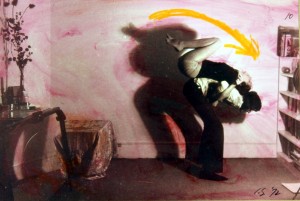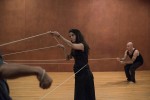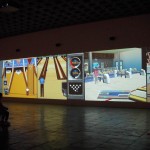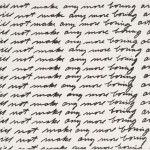This week’s Weekly has my review of In Repose at the Galleries at Moore. Below’s the copy with some pictures. See Andrea‘s and Libby‘s posts for more.
Gender the World
Eighteen female artists in one amazing show at Moore.
”In Repose” at the Galleries at Moore College of Art & Design demonstrates that women artists are continuing to ask questions about gender, identity and power.
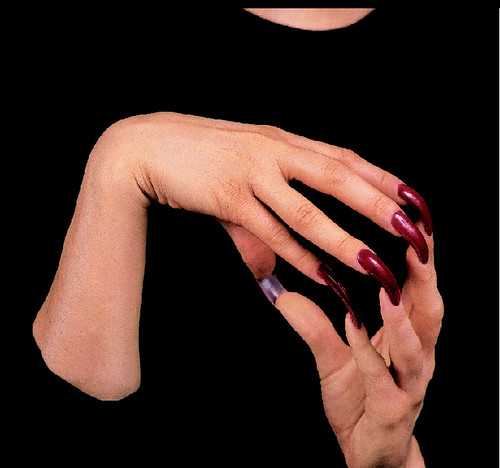
Janine Antoni. Ingrown, 1998. C-print. 18 1/8 x 16 3/8″
The provocative group show of photos, videos and installations by 18 up–and–coming and established women artists is full of stage– managed portrayals of women and young girls. Setup images have long been used as a tool for female empowerment (from early performance art on), and this show brings together several examples from different eras.
From Carolee Schneemann’s 1963 black–and–white self–portraits (nude artist as snake–charming shaman) to Tanyth Berkeley’s 2006 Grace in Window (Grace, an albino, as mystic in rapture). There’s a parade of larger–than–life women whose images—all orchestrated to tell a story—are mythic and powerful even when they suggest victimization. While not a feminist show, the works demonstrate a deep commitment to issues of equality.
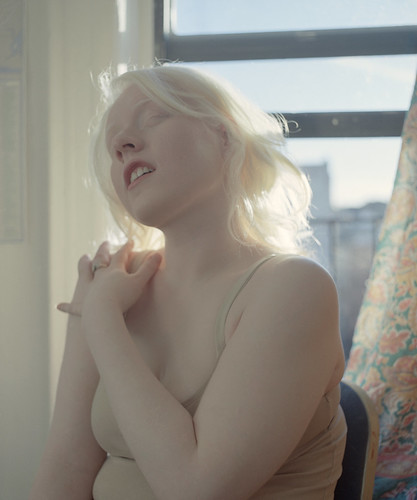
These selections from the Debra and Dennis Scholl collection read less as depictions of individuals than archetypes—the innocent, the debauched, the mystic, the exhibitionist, the barfly, the victim, the shaman, the fashionista. Some of the works are disturbing—like Catherine Opie’s 1993 Self Portrait, in which a drawing of a house and two mommies has been carved into the artist’s back, and Helen Van Meene’s untitled portraits of partially nude children, which look like Victorian child pornography. Others—like the portraits of Grace, Shana, Sophy, Charlie and Suzanne—raise questions about gender ambiguity and standards of beauty.
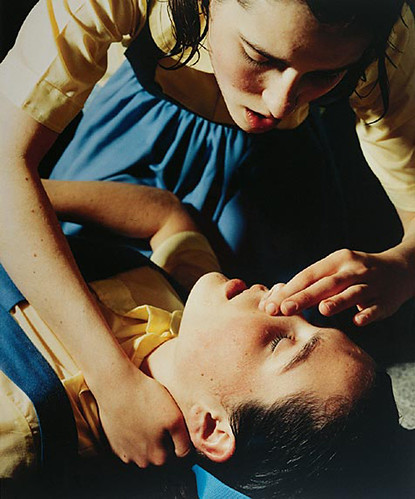
Anna Gaskell. Untitled #2 (Wonder). 1996. C-print. 50×40″
Most of the works are from the past 30 years—a time when color photography and digital printing has made it much easier to print large for maximum impact. Anna Gaskell’s Untitled No. 2 (Wonder) from 1996 and Katy Grannan’s Shana, Mystic Lake, Meaford, Ma. are intimate scenes whose large scale makes them poster–like and grandly weird.
Gaskell’s overhead close–up of two identical women dressed like Alice in Wonderland—one pinching the other’s nose and holding her as if subjecting her to a ritual or punishment—is gripping in its sexual charge—with implications of dominance and submission and the idea of split personality (the two girls might indeed be two sides of the same person).

Katy Grannan. Shana, Mystic Lake, Medford MA 2002. C-print. 48×60
Grannan’s shot of a nude seated on the banks of a river or lake, with legs pulled up to expose her, is a sublime landscape with an added mystery when you notice that what seems to be a female might be a male after all. Nothing is clear in this beautiful shot.
But the level of discomfort is tempered by humor in Pippilotti Rist’s 1986 boob–shaking parody of a music video that’s so fuzzy you can’t really see the show; or in Janine Antoni’s 1998 parody of the nail salon craze in which the artist glues the artificial fingernails of her two hands together, making something quite elegant but completely insane.
Mariko Mori’s unearthly video of the artist channeling anime–tinged witchcraft with a crystal ball on a Tokyo subway platform is both uncategorizable and not to be missed.
While none of the works is strident or angry, each can be seen as political—bringing stories of women to the front burner, and asking the viewer to slow down, suspend judgment and think about women’s lives. A beautiful full–color tabloid catalog accompanies the show.



